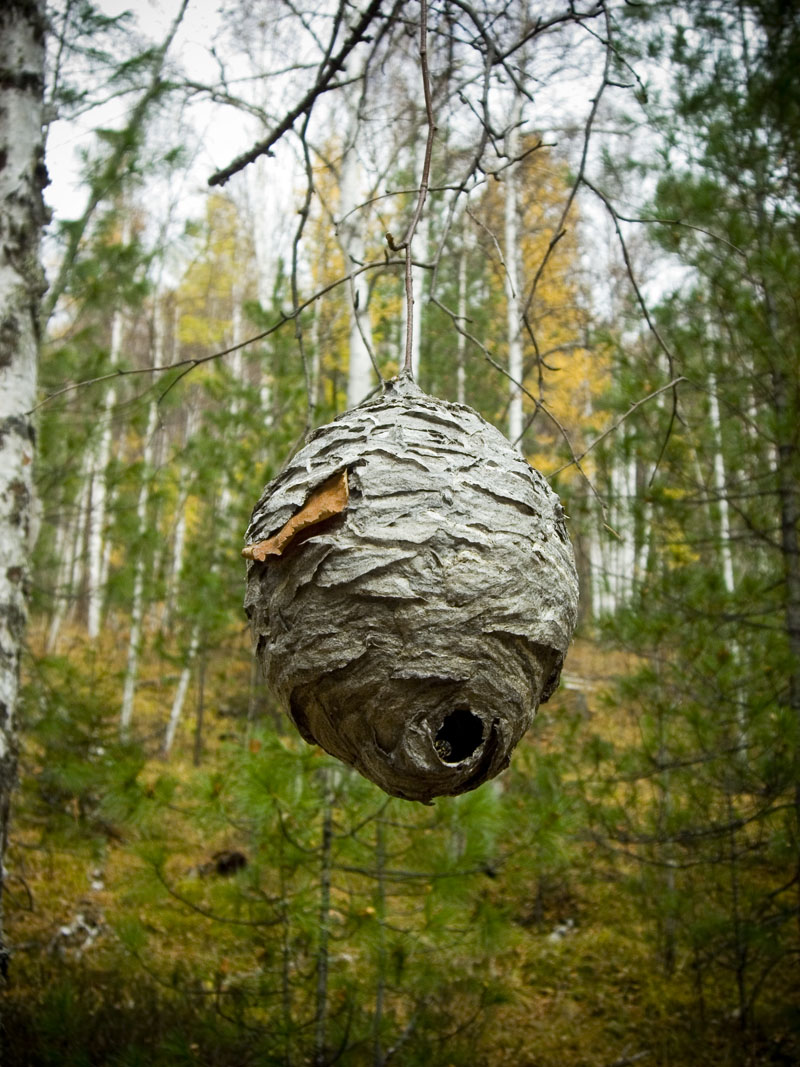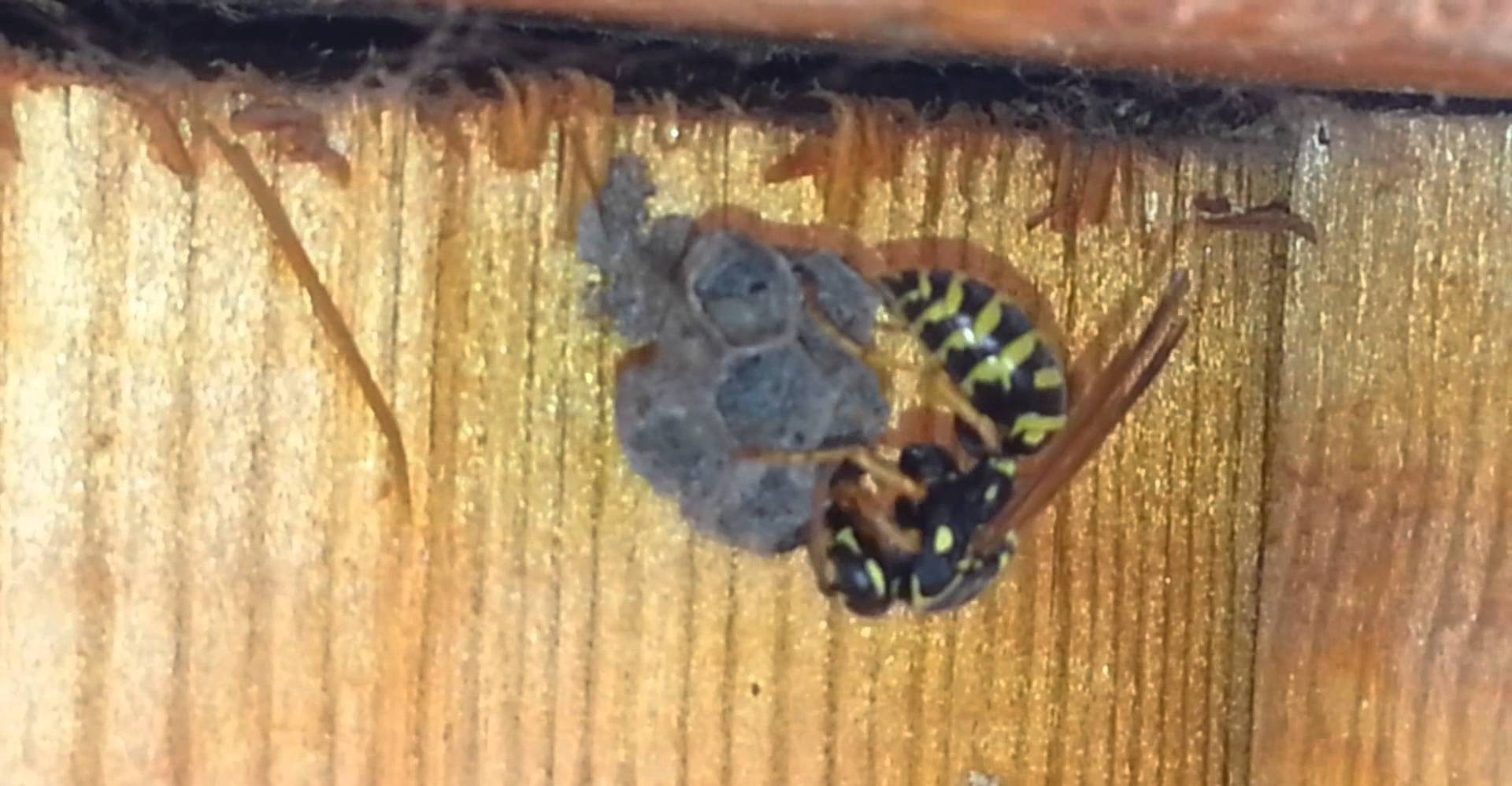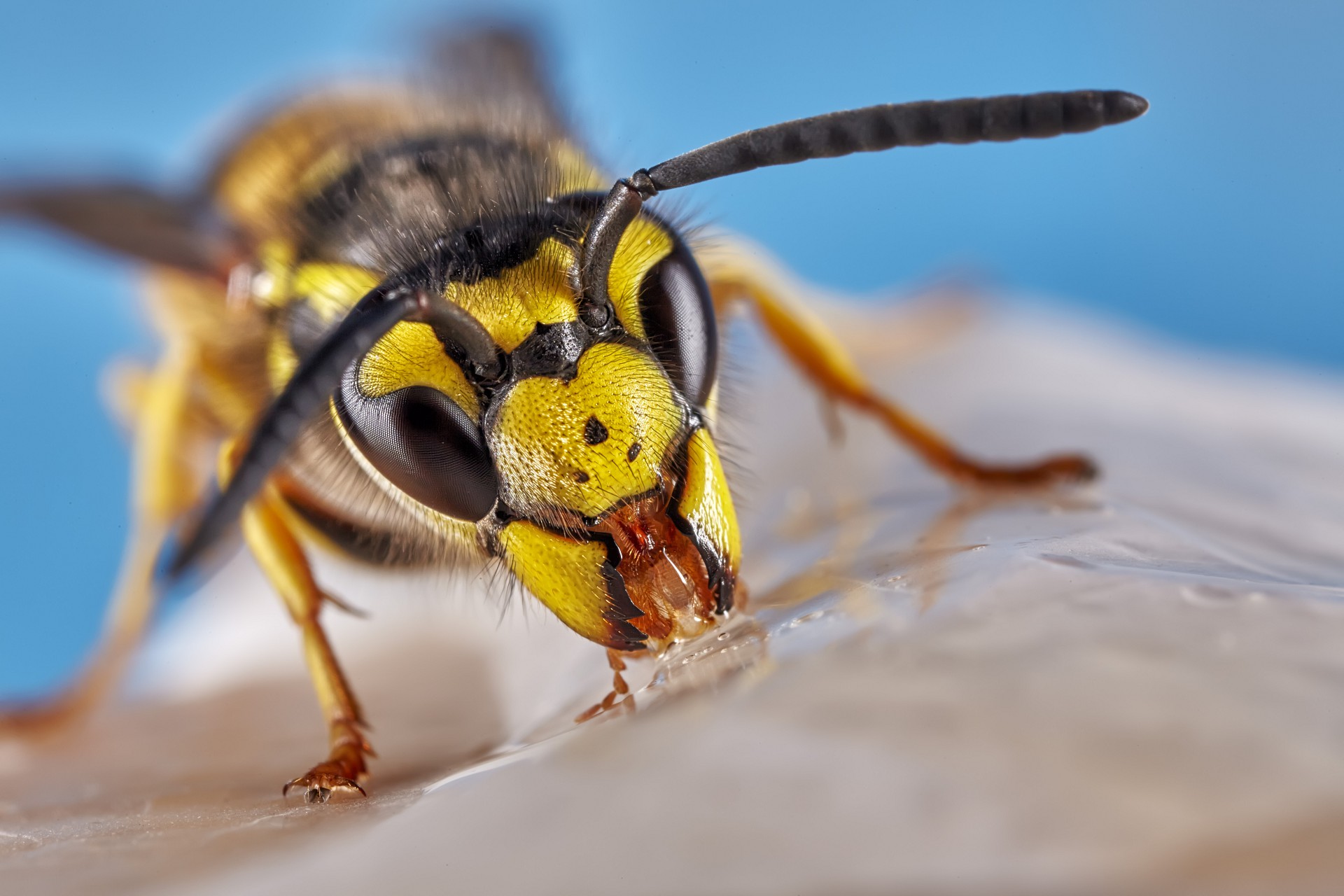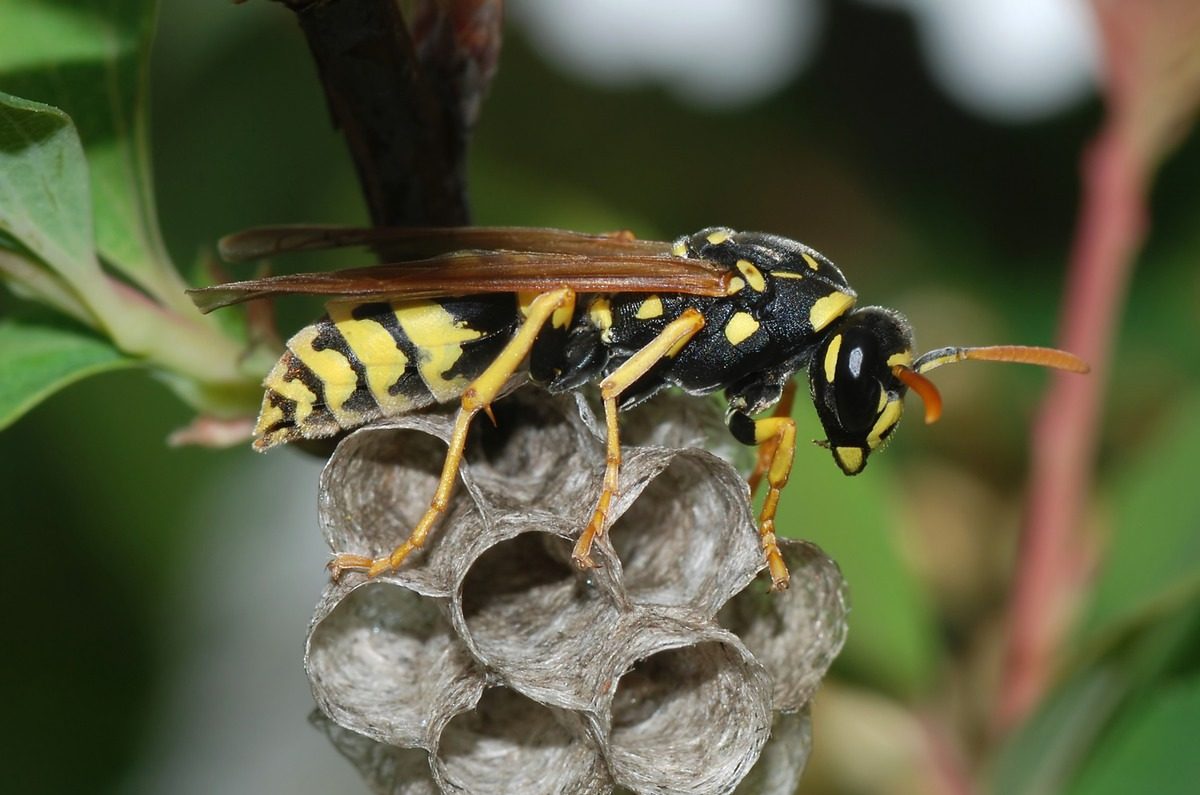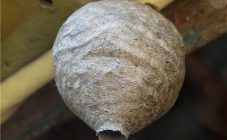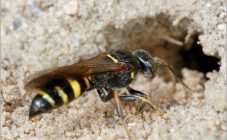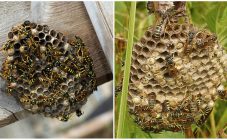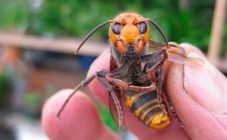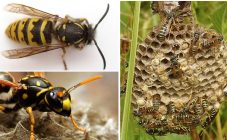Content:
Wasps, unlike many species of insects, having laid the larvae, further protect them, surrounding the future offspring with care. Individuals living in families live in specially built wasp hives.
How to find a hornet's nest
Finding insect habitats is not always easy. This is due to the fact that wasp hives can be found in a wide variety of places:
- underground in empty mouse holes;
- on the branches and in the hollows of old trees;
- in basements and attics of residential premises.
Only a thorough examination of the utility rooms located in the house and apartment will help to find the hive.
Wasps are in constant search of food for the larvae growing up in their nest. The desire to feast on sugary substances attracts insects to people's homes, especially during the jam period. They also do not disdain the scraps of human food.
If it is not possible to determine the presence of a nest visually, and the presence of insects is disturbing, then it is worth leaving fruits or pieces of meat in a conspicuous place. Observing where uninvited guests take their prey, most likely, it will be possible to determine the place of their permanent location.
The size of the constructed hive can range from the diameter of a tennis ball to a basketball, and in some cases even larger. Regardless of the location, the wasp hive is built in the form of a horizontal structure, the cells of which face downward with their entrances.
If, during the search, a hornet's nest was found in the initial stage of construction, then measures must be taken to eliminate it as quickly as possible. This is due to the very fast pace of the insect. Sometimes a new house grows right in front of people amazed at the speed of its appearance.
What wasps make nests
Nature compensated for the inability to produce wax by rewarding the wasps with jaws. With their help, insects scrape pieces of rotten wood, after which they glue the resulting mass with the liquid produced during chewing. Chips, bark and even sawdust are used. The material for construction obtained in this way can be compared in appearance to wrapping paper. For this skill, the insects are called "paper wasps".
The walls of the inner cells have a denser and smoother structure. The layers of the outer sphere of the structure under construction look rather loose. Wasps that live in the tropics use everything they find when creating their hives: pieces of lime, clay grains, and, if necessary, manure.
Wasps have several thousand species, each of which adapts to the environment in its own way. The characteristics of the habitat largely affect what wasps make a hive from.
The largest species of wasps, hornets, use young tree bark in construction. Outside, the hornet hive looks like a large bucket, and in the section, the nest cells are colored yellow-brown, sandy or brown.
How wasps build a nest
The construction of the nest takes place in stages:
- Construction begins in the spring.The female, who managed to survive the winter, prepares a place for breeding future offspring. To do this, she constructs several cup-shaped cells. Due to their shallow depth, one egg is laid in each cell. The female is responsible for the life support of the larvae, obtains food for them and feeds them.
- In the process of growth, the larvae increase in size. The female builds up the walls for the growing offspring as needed. Within a month, there is a metamorphosis of the transformation of the egg laid by the uterus into a pupa, which in turn transforms into an adult.
- The first insects to appear are females that are incapable of reproduction and play the role of building maintenance workers. Now they build on the walls of the partitions, create new cells for eggs, which the female continues to lay. Feeding the growing larvae is also the responsibility of these hardworking insects, but unable to bear offspring.
- July is a turning point in the life of a wasp family living on several floors of a house under construction, filled with cells of different sizes.
- By the end of summer, the largest compartments are occupied by hatched females awaiting the appearance of males. Wasps of different sexes have external differences: males are devoid of a sting, but have a mustache larger than the antennae of females.
- Together with the passing summer months, the life of the male population of the hive ends, as well as the working wasps and the old uterus. The construction stops.
- Grown up young females during this period leave their summer home, find cozy and warm crevices in which they will wait for the arrival of spring.
- Next spring, each of the fertilized wasps will become a uterus and begin construction of a new house in which future offspring will be laid.
How many wasps are in one nest
Depending on the size of the house, a huge number of insects, sometimes hundreds of thousands, can comfortably coexist in it.
Wasps are distinguished by a variety of species of individuals living in interaction in one house. Females, males and working insects have different structures and external differences, noticeable even to a non-specialist. Each group strictly fulfills the duties prescribed by nature. Differences within one species are called polymorphism, or polymorphism. The bulk of the residents are working individuals who are concentrated around the uterus, which continues to lay new eggs.
How many wasps live in a nest
After the wasps have made a nest, the life cycle of the wasp family lasts one summer. The life of the hive, which began in spring, reaches its climax by the middle of summer and continues while construction continues. By the beginning of autumn, all vital processes subside and stop. The established order is unchanged and requires annual new buildings.
Last year's hives are not relevant for a wasp swarm, but if the location chosen for the construction is successful, the insects will build another dwelling within walking distance from last year's house.
When wasps leave their nests
Each hive contains guard wasps. At the moment of approaching danger, they give a special signal, thanks to which a large number of irritated insects instantly appear from the nest, ready to defend their possessions.
Despite the fact that the poison of a wasp does not pose a critical danger to humans, its bite is quite painful. The most powerful and unpleasant for humans is the hornet bite.
Close proximity to a wasp nest can spoil not only the mood of people living nearby, but also their health.Therefore, having found a hive, it is necessary to take drastic measures to ruin it. With quick and precise movements, crush the hive with your hand or, if possible, your foot.
How far do the wasps fly away from the nest?
Social insects are "tied" to their home. Wasps fly away from it only during the day, preferring to spend the night at home. It is this time that is considered the most favorable for spraying wasp nests with pesticides in order to destroy insects.
Wasps fly out at a distance of no more than 100 meters from the dwelling they built. There are two reasons for leaving home walls:
- search for food;
- danger of ruining the nest.
Who ravages hornets' nests
In addition to people who do not like living next to wasps, their houses are often ruined by wild animals and birds. It is especially common to see titmice pecking last year's hornets' nest.
Wasp nests can be a source of discomfort and irritation for those whose home they choose as their place of stay. Therefore, it is better to take care of preventive measures in advance to avoid uncomfortable and burdensome neighborhoods.
